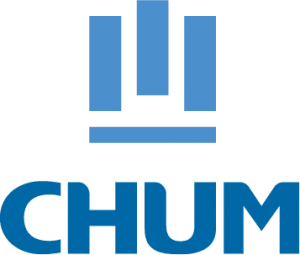Le Centre hospitalier de l’Université de Montréal (CHUM) évolue et se transforme pour s’adapter aux changements constants de son environnement interne et externe. L’évolution des besoins et des demandes de la population, le progrès des connaissances et des technologies, ainsi que l’intégration de l’intelligence artificielle (IA) en santé génèrent ces changements perpétuels. Le CHUM s’est aussi rapidement ajusté à la crise de la COVID-19 en adaptant son offre de soins et de services, d’enseignement, de recherche, de gestion, d’innovation et le tout en partenariat avec les patients et partenaires de tout horizon. C’est pour s’adapter à ces changements que le CHUM est une organisation innovante. Le CHUM mise sur la créativité et l’intelligence individuelle et collective, amplifiées par l’intelligence artificielle, pour répondre à ces changements. Il met aussi en place un modèle d’organisation agile, de même qu’un écosystème d’innovation ouverte pour créer et maintenir un environnement propice à l’innovation.
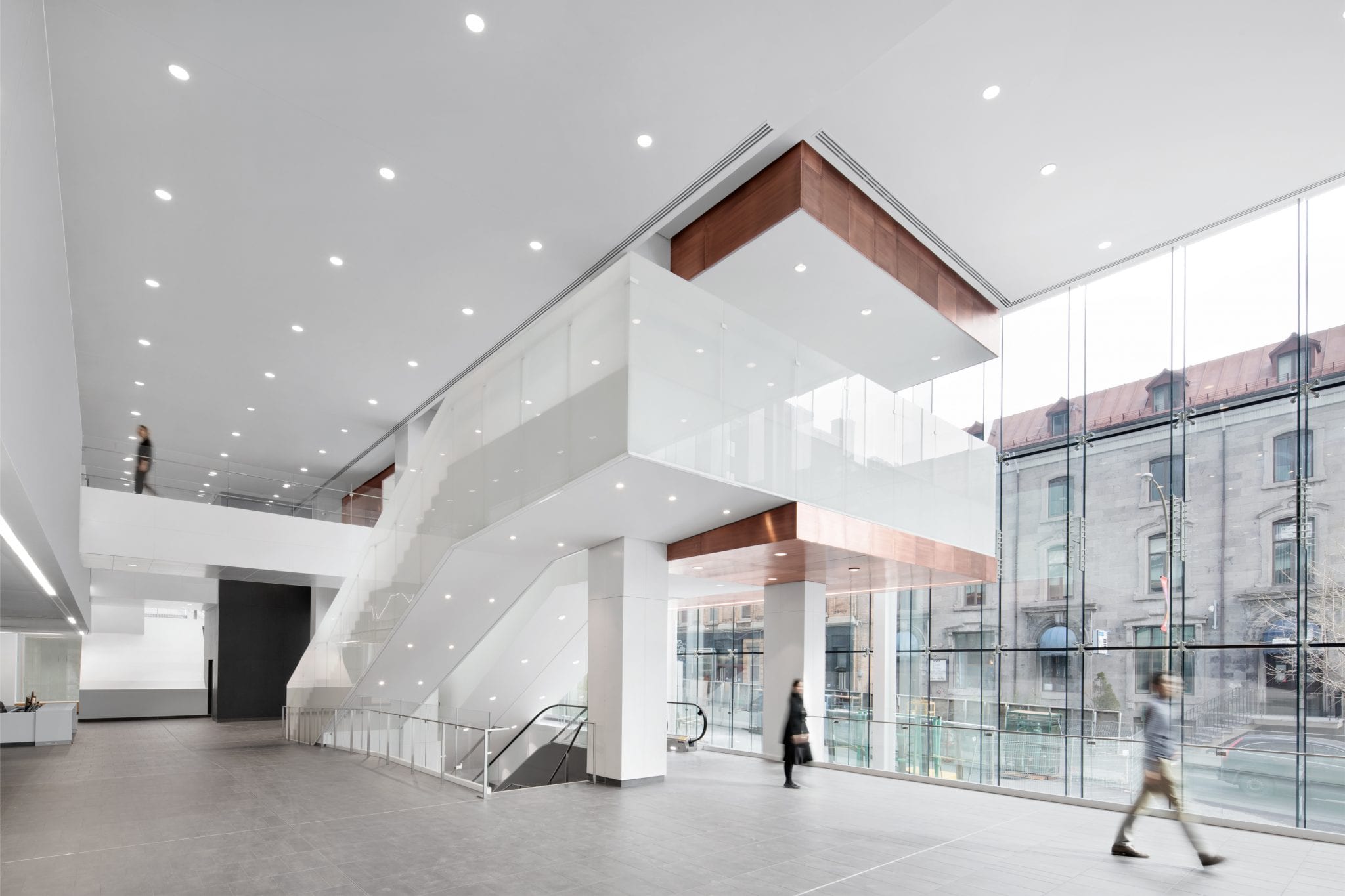
Ce qui distingue le CHUM
Repenser l’hôpital de demain, c’est la grande réflexion et la belle aventure du nouveau Centre hospitalier de l’Université de Montréal (CHUM), qui regroupe sous un même toit les équipes de ses trois hôpitaux fondateurs depuis l’automne 2017. C’est également la genèse d’un projet de santé et de société d’envergure. Ce projet a grandement évolué au cours des deux dernières décennies et il continue de se définir encore aujourd’hui.
Le complexe hospitalier du CHUM se trouve en plein cœur du centre-ville de Montréal, occupant un quadrilatère complet, en plus d’être relié à un bâtiment de logistique par une passerelle et des tunnels, ainsi qu’à une station de métro. Hôpital universitaire affilié à l’Université de Montréal, le CHUM offre des soins spécialisés et surspécialisés à la population adulte québécoise. Sa mission se décline en cinq volets : soins, enseignement, recherche, promotion de la santé, et évaluation des technologies et des modes d’intervention.
Un complexe vaste et accueillant
L’architecture du CHUM fait le pont entre le passé et l’avenir : deux éléments patrimoniaux distinctifs, soit le clocher de l’église Saint-Sauveur (1865) et la maison Garth (1871), ont été démantelés puis reconstruits pierre par pierre. Ces éléments, tout comme les points de vue sur la ville, constituent des repères visuels facilitant l’orientation des patients, des visiteurs et du personnel du complexe hospitalier.
Le CHUM possède la plus grande collection d’œuvres d’art issue de la Politique d’intégration des arts à l’architecture du Québec : à terme, le public découvrira 13 œuvres réalisées par des artistes sensibles à la mission du CHUM.
La dernière phase comprendra d’autres cliniques, bureaux et stationnements, en plus d’une bibliothèque et d’un amphithéâtre. L’inauguration se fait en Juin 2021.
Quelques données
• 268 000 mètres carrés
• 772 lits
• 415 salles d’examen
• 39 salles d’opération
• 30 000 équipements médicaux innovants
• 500 000 visites par an
16 500 travailleurs
• 1 200 médecins, dentistes et pharmaciens
• 4 000 infirmières et infirmières auxiliaires
• 2 000 autres professionnels de la santé
• 2 200 chercheurs
• 6 000 étudiants et stagiaires
• 1 100 bénévoles

The Centre hospitalier de l’Université de Montréal (CHUM) is developing and changing to adapt to constant change in its internal and external environment. The changing needs and demands of the public, the advances in knowledge and technologies, and the integration of artificial intelligence (AI) into health care have triggered these continuing changes. The CHUM also quickly adapted to the COVID-19 crisis by adapting its response to care and services, teaching, research, management and innovation, all in partnership with patients and partners from all horizons.
Striving to adapt to these changes has made the CHUM an innovative organization. The CHUM has tapped into individual and collective creativity and intelligence, augmented by artificial intelligence, to meet these changes. It has also introduced an agile organization model and an open innovation ecosystem to create and maintain an environment favourable to innovation.
What sets the CHUM apart
Rethinking the hospital of the future is the focus of discussion and the exciting adventure of the new Centre hospitalier de l’Université de Montréal (CHUM), which brought the teams of its three founding hospitals together under one roof in the fall of 2017. It is also the beginning of a major health care and social project. This project has changed a lot over the last two decades and is still being defined today.
The CHUM hospital complex is located in the heart of downtown Montreal where it occupies a full city block, in addition to being connected to a logistics building via a walkway and tunnels, and to a Metro station. A university hospital affiliated with the Université de Montréal, the CHUM provides specialty and subspecialty health care to the adult population of the province of Quebec. Its mission comprises five dimensions: health care, teaching, research, health promotion and the evaluation of technologies and intervention methods.
A complex that’s both vast and welcoming
The CHUM’s architecture acts as a bridge between the past and the future: two distinctive heritage features, namely, the steeple of the Holy Trinity Church (1865) and the Garth House (1871), were dismantled and rebuilt, stone by stone. These features, as well as the views of the city, provide visual cues that help patients, visitors and staff find their way through the hospital complex.
The CHUM has the largest collection of works of art, implemented under the Politique d’intégration des arts à l’architecture du Québec: eventually, the public will be able to discover 13 works of art created by artists mindful of the CHUM’s mission.
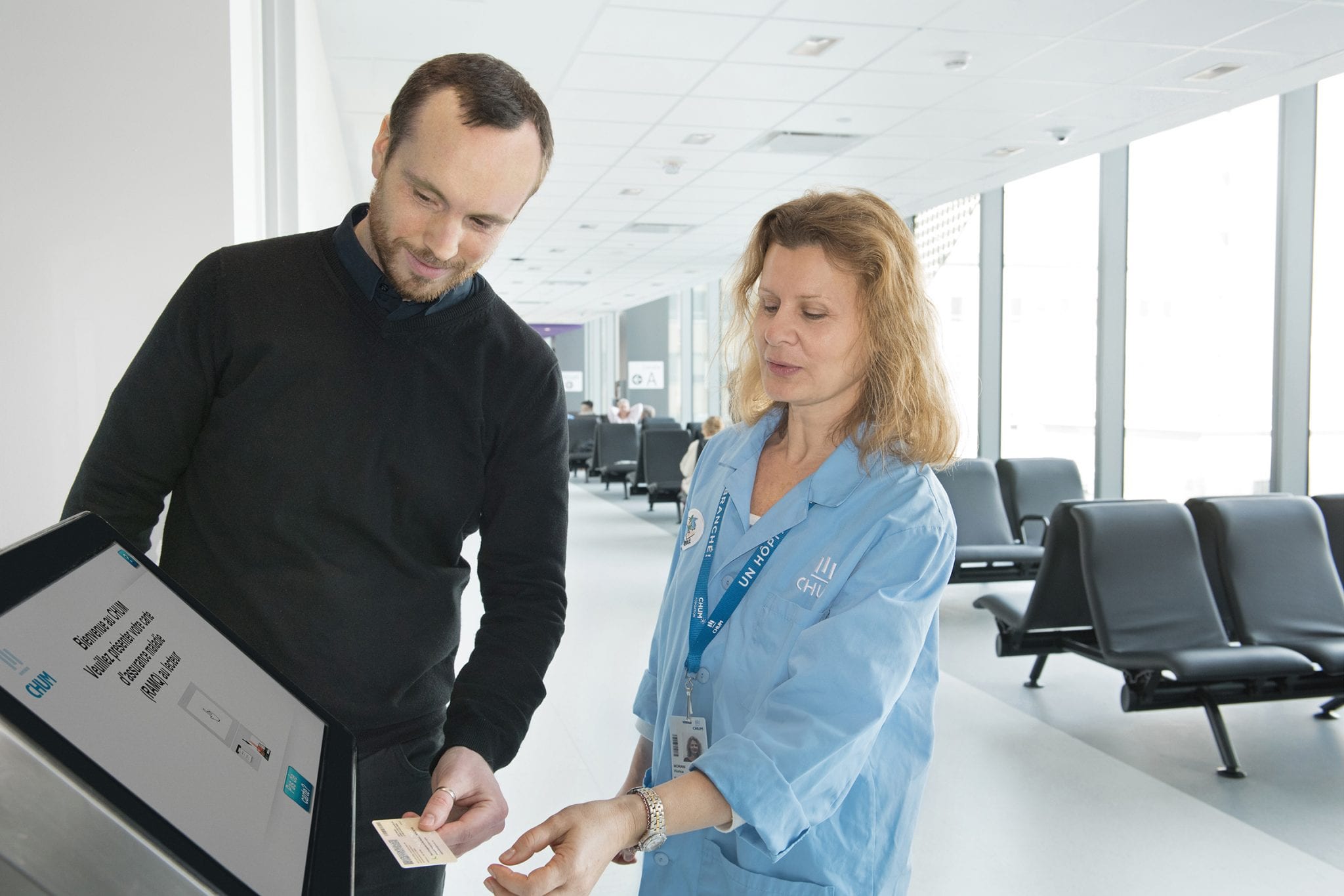
Innover pour mieux comprendre les besoins et humaniser le parcours patient et sa trajectoire de vie
• Des projet de recherche sont en cours pour mieux comprendre les mécanismes et les facteurs favorisant un système et des organisations de santé innovants et apprenants, répondant mieux aux besoins des populations et des intervenants de la santé.
• En consultation externe, le patient s’enregistre à l’une des bornes en passant sa carte d’assurance maladie sous le lecteur et prend ensuite le coupon précisant les étapes à suivre. Un bénévole est toujours sur place pour l’épauler et le rassurer.
• À l’urgence, le patient remplit un formulaire pour faciliter la première analyse de son état avant de voir le médecin. Liées à un logiciel d’intelligence artificielle, les questions s’adaptent en fonction des réponses précédentes; le formulaire est ensuite utilisé pour entamer la conversation entre le patient et son médecin.
Dans les deux cas, l’objectif est d’optimiser le parcours du patient et d’éliminer des étapes administratives au profit des soins et de l’échange humain
À plus long terme, une plateforme numérique s’attardera aux interactions entre le patient et son entourage, son équipe de soins et sa communauté, et documentera les besoins de santé médicaux et non médicaux en milieu de vie réel. L’Hôpital et le Réseau Apprenant, Communicant, Enseignant (HoRACE) permettra de mieux coordonner, transformer et personnaliser le réseau de la santé.
Innover pour offrir un meilleur environnement
• 70 véhicules autoguidés réalisent 3 500 déplacements par jour en acheminant les médicaments, les plateaux-repas, les fournitures, les instruments, les équipements, la lingerie, les déchets et le recyclage. Les professionnels de la santé, étant libérés des tâches logistiques, peuvent se consacrer davantage aux soins des patients.
• Plus de 40 centrales de traitement d’air propulsent de l’air neuf en continu dans tout l’hôpital, favorisant un environnement contrôlé et adapté au contexte de soins du patient.
• Tous les circuits électriques du CHUM ont une redondance pour éviter une panne ou une interruption de service, assurant ainsi la continuité des services cliniques.
• Le système de gestion du bâtiment du CHUM dispose de 125 000 points de contrôle. La collecte et l’analyse de ces milliards de données permettra de continuer d’améliorer la performance des bâtiments intelligents en soutien aux activités cliniques.
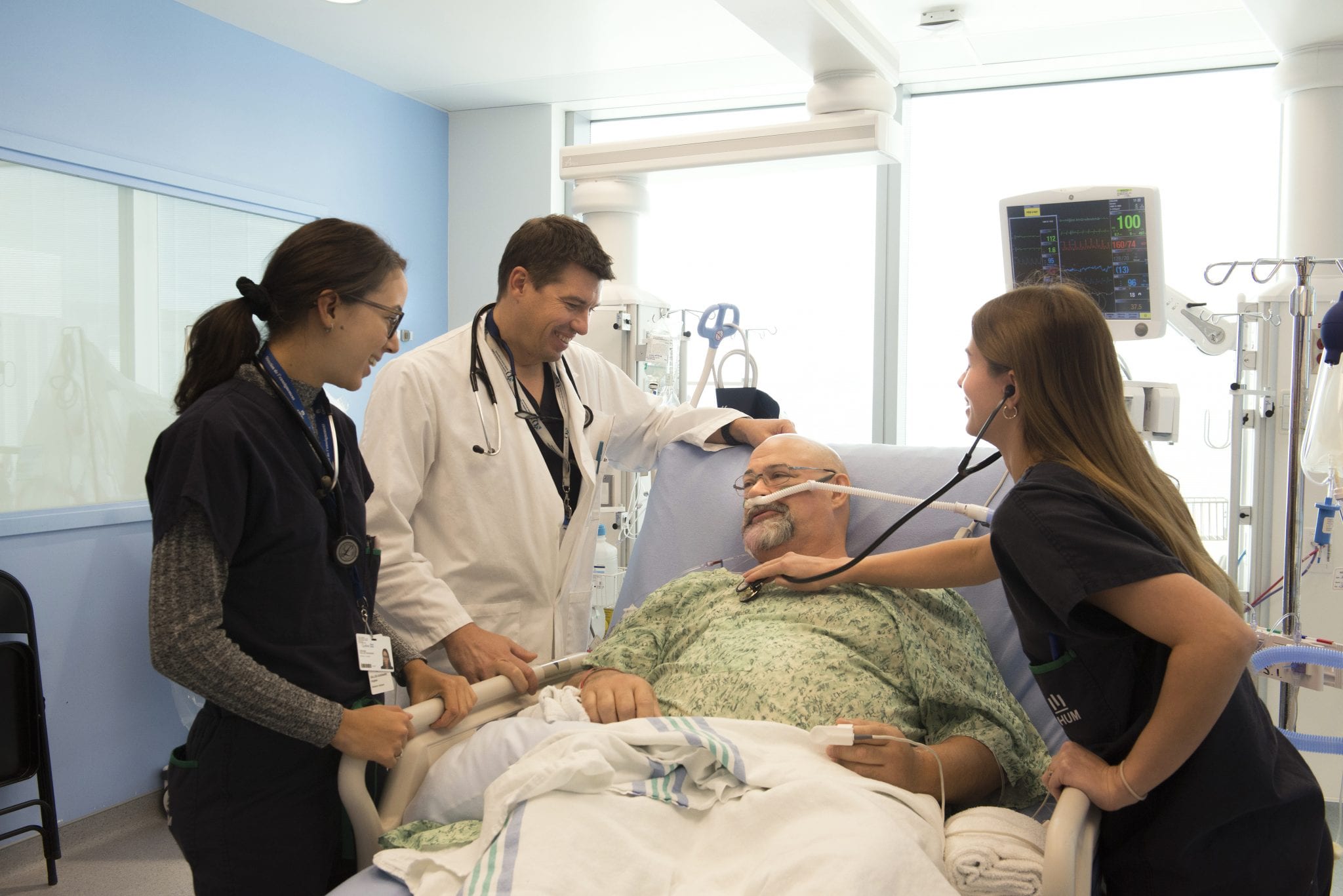
Innover pour mieux répondre aux besoins (prévenir, guérir, traiter) en misant sur la créativité et l’intelligence individuelle, collective et augmentée de son écosystème
Le CHUM travaille sur de nombreux projets utilisant la créativité et l’intelligence humaine, augmentée par l’intelligence artificielle ou les nouvelles technologies, avec le souci de les apprivoiser et de les implanter adéquatement dans la pratique clinique et ce, avec l’apport des patients.
• Un projet de recherche vise à mieux diagnostiquer la dépression grâce aux montres intelligentes. Ce phénotypage digital permettrait d’éviter les rechutes grâce à un suivi continu.
• Un autre projet de recherche a recours à l’intelligence artificielle pour prédire les crises d’épilepsie, comme on prédit la météo, dans le but de les prévenir et, un jour, de les traiter localement.
• À l’Unité des grands brûlés, des patients ont pu éviter une amputation ou des complications grâce au leadership et à l’ingéniosité d’infirmières. Celles-ci ont utilisé et combiné des technologies de thérapie par pression négative pour des conditions médicales nouvelles. Elles ont même influencé la technologie du partenaire industriel. Le CHUM pourrait devenir un centre de référence au Canada en la matière.
• Le Centre d’intégration et d’analyse des données du CHUM (CITADEL) bâtit et gère le vaste entrepôt de données des patients du CHUM afin de contribuer à l’avancement des connaissances en plus de la recherche, et de générer des projets novateurs pour améliorer la santé et le mieux-être de la population du Québec et d’ailleurs dans le monde.
• Le CHUM déploie le projet « VIA CHUM » en offrant un accompagnement stratégique aux entreprises qui souhaitent valider leurs innovations technologiques en milieu clinique réel, dans les laboratoires vivants du CHUM.
• Pour faire vivre cet écosystème, les équipes du CHUM et de l’ensemble du réseau partagent et échangent sur les projets d’avant-garde en cours à l‘occasion d’Innove-Action, un événement d’innovation annuel phare du CHUM. Plusieurs autres événements tout au long de l’année font vivre l’écosystème d’innovation du CHUM.

A final phase will house other outpatient clinics, offices, parking facilities, a library and an amphitheatre. The inauguration is in June 2021.
Some figures
• 268,000 square metres
• 772 beds
• 415 examination rooms
• 39 operating rooms
• 30,000 pieces of innovative medical equipment
• 500,000 visits per year
16 500 workers
• 1,200 doctors, dentists and pharmacists
• 4,000 nurses and nursing assistants
• 2,000 health professionals
• 2,200 researchers
• 6,000 students and trainees
• 1 100 volunteers
Innovation to better understand needs and humanize the patient’s hospital experience and their lifelong health care trajectory
• Research projects are under way to better understand the mechanisms and factors that promote innovative learning health systems and organizations, to better meet the needs of the public and health care staff.
• In outpatient clinics, patients register at one of the terminals by scanning their health insurance card and taking a ticket that informs them of the procedure to follow. A volunteer is always present to assist and reassure patients.
• In the emergency department, patients complete a form to facilitate the initial analysis of their condition before seeing the doctor. Connected to artificial intelligence software, questions appear based on the patient’s previous answers and the form is then used to initiate the conversation between the patients and their doctor.
In both cases, the goal is to optimize the patient’s hospital experience and to eliminate administrative steps in favour of health care and human dialogue.
In the longer term, a digital platform will focus on the interactions between the patients and their family members, health care team and community, and will document their medical and non-medical health care needs in real-life settings. The Hôpital et Réseau Apprenant, Communicant, Enseignant (HoRACE) will make it possible to better coordinate, transform and personalize the health care system.
Innovation to provide a better environment
• 70 automatic guided vehicles make 3,500 trips every day, transporting medication, meal trays, supplies, instruments, equipment, linen and waste and recycling material. The staff, no longer required to carry out such logistics-related tasks, has more time to devote to patient care.
• More than 40 air handling units continuously supply fresh air throughout the hospital, creating a controlled environment suited to a patient-care context.
• All the CHUM’s electric circuits are redundant to avoid a power outage or service interruption, thus ensuring the continuity of clinical services.
• The CHUM’s building management system features 125,000 data points. Collecting and analyzing these billions of pieces of data will allow it to continue to improve the performance of the smart buildings that support the clinical activities.
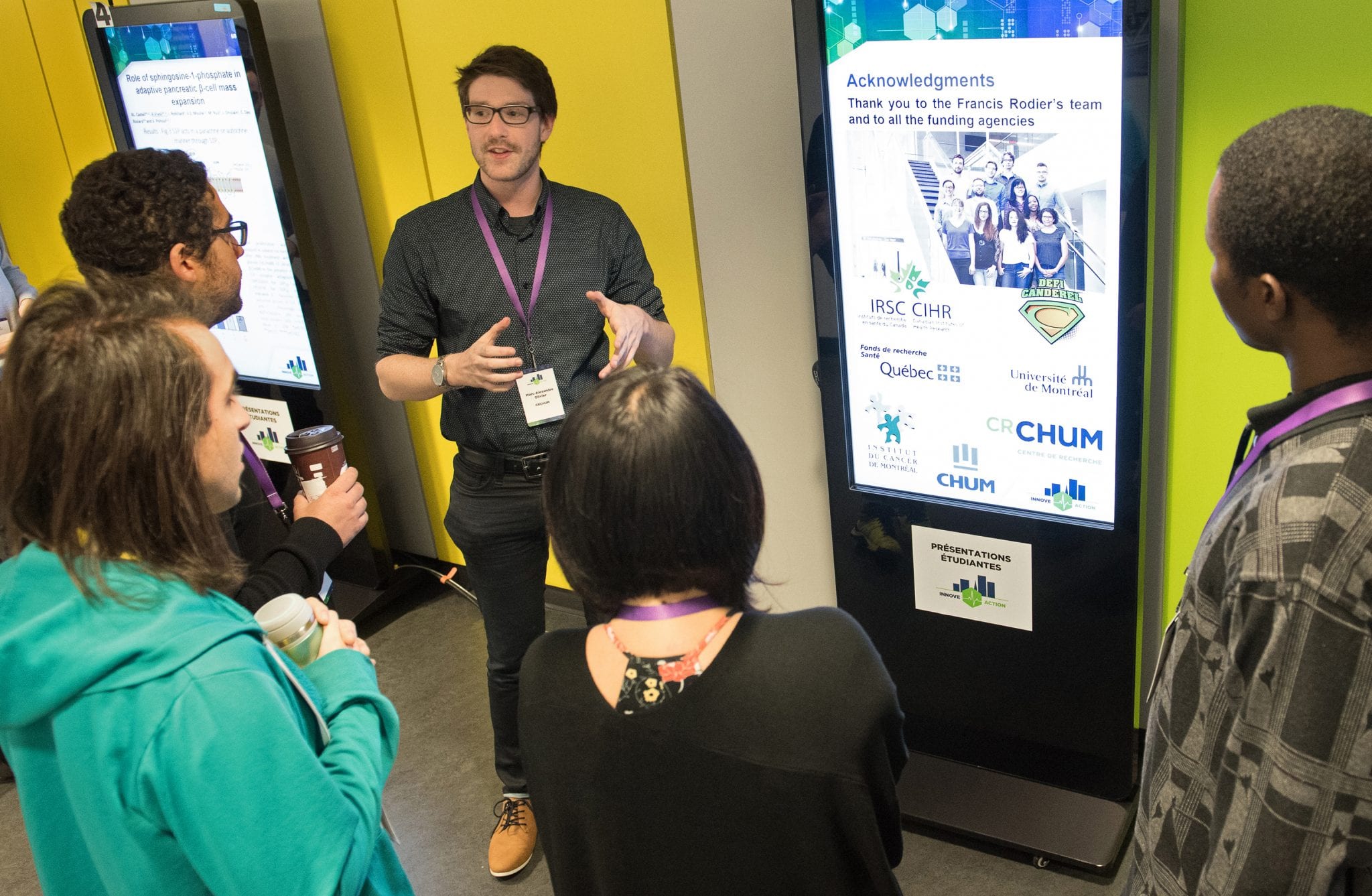
Innover en recherche, ses forces vives
Le Centre de recherche du CHUM (CRCHUM) a été inauguré en 2013. Il représente la première phase du nouveau complexe hospitalier. Le CRCHUM est le seul établissement en milieu hospitalier au Québec à couvrir tout le continuum de la recherche : recherche fondamentale, recherche clinique et recherche en santé des populations.
Ses axes de recherche sont les suivants: cancer, cardiométabolique, immunopathologie, neurosciences, imagerie et ingénierie, ainsi que le Carrefour de l’innovation et de l’évaluation en santé.
Tout nouvel outil de gestion, traitement, appareil ou médicament utilisé dans l’hôpital est issu de travaux de recherche. D’ailleurs, la recherche constitue la base même de l’innovation, élément fondamental dans l’application de toute découverte à la prévention, au diagnostic et au traitement des maladies.
Innover par l’École de l’intelligence artificielle en santé, un leader mondial
Le CHUM a mis sur pied la première École de l’intelligence artificielle en santé (ÉIAS) au monde. L’ÉIAS se concentre sur le développement des capacités humaines et l’implantation de l’IA en milieu réel. Elle permet à sa communauté de se développer, d’appliquer l’IA à la santé et d’en mesurer les impacts sur les patients, les équipes, le système de santé; elle permet aussi d’étendre les connaissances et les compétences à l’échelle mondiale.
L’ÉIAS aborde des thèmes importants, tels que l’acceptabilité sociale à l’endroit de l’IA en santé, la transformation des métiers, des professions, des pratiques et des équipes, de même que l’organisation du réseau de la santé. Cette école dispense des cours, des formations et des activités d’apprentissage variés à un ensemble de publics, dont les patients et les citoyens.
Innover grâce à la Fondation du CHUM
La Fondation du CHUM a pour mission de faire rayonner l’établissement et de lui assurer une source de financement complémentaire. Depuis 20 ans, la Fondation du CHUM agit comme un catalyseur et elle est une véritable force motrice dans la concrétisation des innovations du CHUM, grâce à une multitude d’initiatives. La Fondation a elle-même innové récemment en aménageant des bornes de don interactives, une première en Amérique du Nord. Cette nouvelle pratique de don fait appel à la simplicité du geste du paiement sans contact, par carte ou depuis son téléphone mobile, tout en
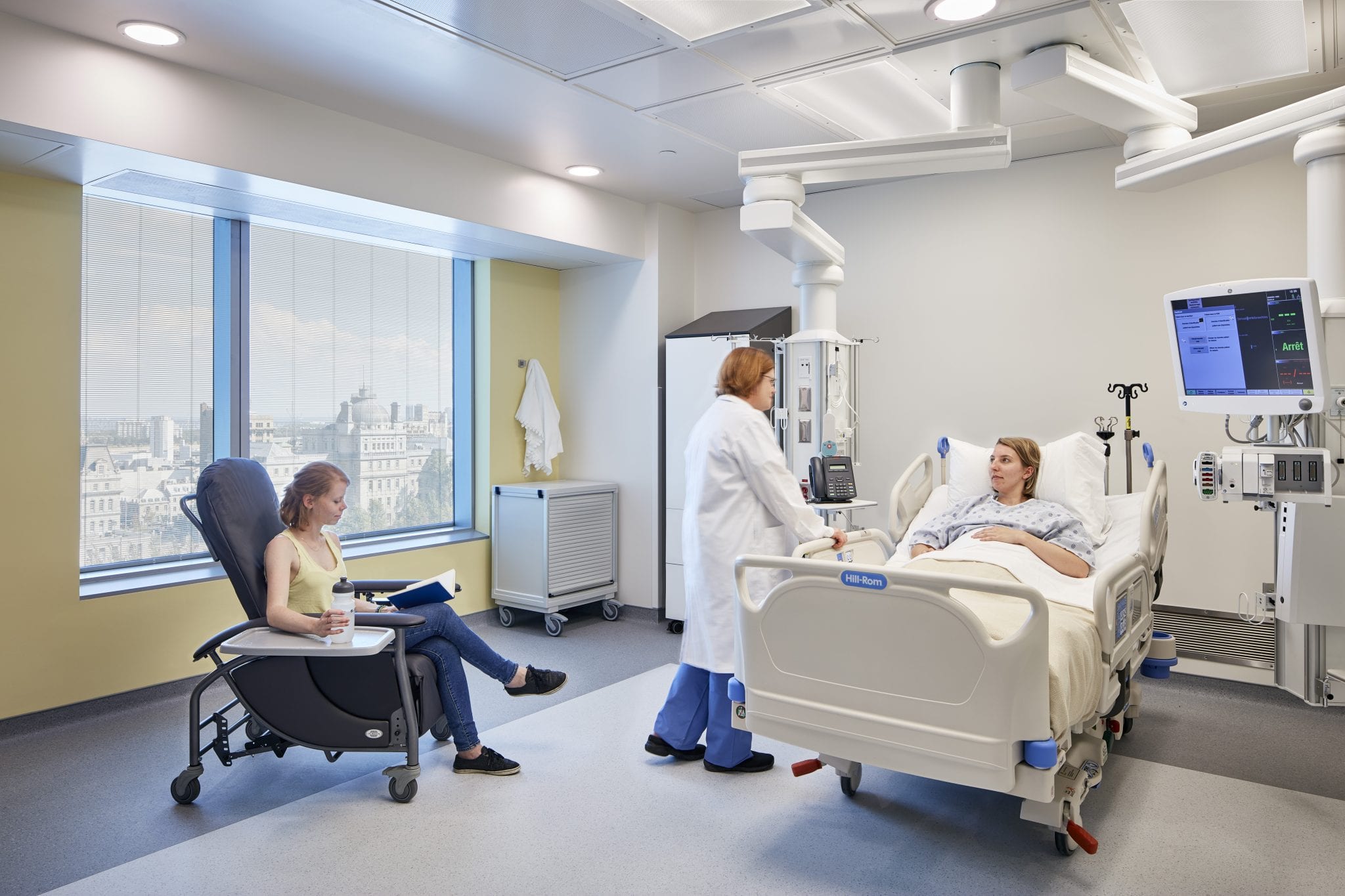
Innovation to better meet needs (preventing, healing, treating) by tapping into the individual, collective and augmented creativity of its ecosystem
The CHUM is working on many projects that use human creativity and intelligence, and intelligence augmented by artificial intelligence or new technologies with a view to mastering them and implementing them appropriately in clinical practice, with the help of patients.
• A research project aims to better diagnose depression by using smart watches. This digital phenotyping would allow patients to avoid relapses through ongoing monitoring.
• Another research project uses artificial intelligence to predict epileptic seizures similar to the way we predict the weather, with an eye to preventing seizures and to one day having the ability to treat them locally as well.
• At the Major Burns Unit, patients were able to avoid amputation or complications thanks to the leadership and ingenuity of the nurses. The latter used and combined negative pressure therapy techniques for new medical conditions. They even influenced the industry partner’s technology. The CHUM may become a referral centre in this field in Canada.
• The CHUM’s Centre d’intégration et d’analyse des données (CITADEL) builds and manages the CHUM’s vast patient data warehouse in order to contribute to the advancement of knowledge and research and to generate innovative projects to improve the health and well-being of the people of Quebec and worldwide. • The CHUM has also implemented the VIA CHUM project, that provides strategic support to companies wanting to validate their technological innovations in real clinical settings in the CHUM’s living laboratories.
• To sustain this ecosystem, the teams at the CHUM and throughout the entire network share and discuss their current leading-edge projects during Innove-Action, a key innovation event hosted annually by the CHUM. Several other events throughout the year sustain the CHUM’s innovation ecosystem.

Innovation in research, its lifeblood
The CHUM Research Centre (CRCHUM) opened in 2013, representing the first phase of the new hospital complex. The CRCHUM is the only hospital-based institution in Quebec to cover the entire research spectrum: basic, clinical and population health research.
Its research themes are the following: cancer, cardiometabolic diseases, immunopathology, neuroscience, imaging and engineering and the Health Innovation and Evaluation Hub.
All new management tools, treatments, devices or drugs used in the hospital are the result of research work. Research is the very foundation of innovation – it is a key element in applying any discovery intended to prevent, diagnose or treat diseases.
Innovation by the School of Artificial Intelligence in Health, a global leader
The CHUM founded the world’s first School of Artificial Intelligence in Health (SAIH). The SAIH’s focus is the development of human capabilities and the real-world implementation of AI. The school allows its community to develop, to apply AI to the field of health, to measure its impacts for patients, teams and the health care system, and to disseminate knowledge and skills worldwide.
The SAIH deals with important themes such as the social acceptance of AI in health care, transformations to occupations, professions, practices and teams, as well as the organization of the health care network. This school offers a variety of courses, training sessions and learning activities to many audiences, including patients and citizens.
Innovation with the help of the Fondation du CHUM
The mission of the Fondation du CHUM is to provide the institution visibility and an additional source of funding. For 20 years, the Fondation du CHUM has been a catalyst and a true driving force behind the innovations accomplished by the CHUM through its many initiatives. The Fondation itself innovated recently by setting up interactive donation terminals, a first in North America. This new way of making a donation exploits the simplicity of contactless payment, using a card or a cell phone, while providing a solution to visitors’ spontaneous desire to give to the CHUM.

